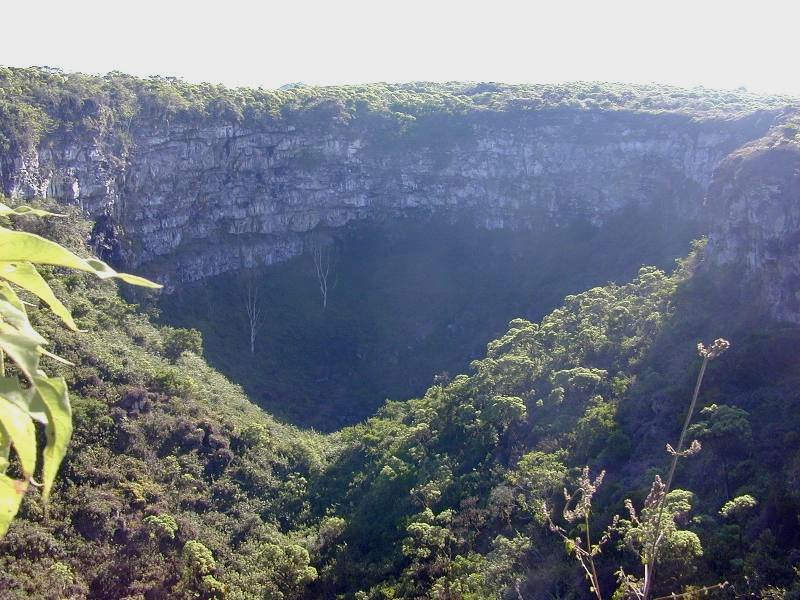 |
| A Scalesia Forest |
Many factors have contributed to the intense decline of the population. The most influential factor is human interaction, but some invasive plants and animals have had an effect as well. Humans started clearing the forests in the early 20th century and by the 1990s, there were barely any full scale Scalesia forests left on any island. Most of the forests were cleared in order to create more land for agriculture and farming. This question of forest habitat or farmland for food is quite a tough one! In the southern part of Santa Cruz Island, there are zero Scalesia trees left, with the last one being cleared in the 1970s. Another major factor contributing to the deforestation is, believe it or not, ravaging goats. Who would have thought? These savage-like goats have literally grazed the forests until they trees can no longer survive. However strange, the goats have done some real damage on the trees and the animals who call those forests home. Fortunately, the goats were eradicated from Santiago Island, the uninhabited island which they were doing the most damage, in 2006. Another factor to the population decrease are invasive species, those being planted by farmers as well as those accidentally brought to the islands. On the populated islands, the forests' only chances of regeneration are by the hand of man, which has been done in a few instances. For example, there are a few small, two-acre, fenced plots where the trees are untouched and allowed to reach maturity so that they can hopefully spread again. The Charles Darwin Research Station is currently conducting experiments and studies in an effort to learn more about why and how this genus may be struggling, in addition to helping control the goat and invasive specie population. On the uninhabited islands, the eradication of the goats helped but it is really up to nature as to the future of the Scalesia forests.
The best area to view the forests is around Los Gemelos, two giant twin craters on Santa Cruz Island.
 |
| Los Gemelos |
What do you think about the situation with the goats and the trees?
What would you do to stop the deforestation being done to create room for agriculture?
Do you think agriculture is more important than a few trees?
Sources
Galapagos Report 2009-2010
Galapagos Conservation Trust
Personally, on an island such as the Galapagos, I believe that trees are more important than agriculture. On such small islands, there is no room to farm and raise up too many cities (I know there are a few), and therefore no need to create multiple fields. These islands were meant to natural and wild, and it always makes no sense to deforest an entire island.
ReplyDeleteI find it interesting how a species like that of the goat can so indirectly affect the trees. Its interesting to see that by essentially eliminating the trees food source, the goats have been a large catalyst in the decline in the tree population. Hopefully the elimination of the goats and the preservation attempts will help prolong the species.
ReplyDelete